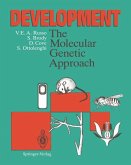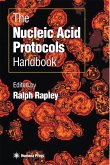The informational content of cells is encoded in the nucleotide sequences of their DNA. The restrictions on base pairing- A pairing with T (U), and G pairing with C - in nature assures the fidelity of replication of DNA in cell division, and of transcription. In the test tube, these restrictions can be exploited for ascertaining similarities and dissimilarities of nucleic acids of varying origin by measuring the kinetics of reassociation of polynucleotides to double-stranded molecules in DNA DNA renaturation or RNA-DNA hybridization experiments, and by determining the thermal stability and other physical-chemical properties of the resulting hybrid molecules. This method has enormous potential for developmental biology. It offers a more direct approach to the ever-present question of the genetic identity of different cell types in an individual organism, and a more direct test of the hypothesis of diffe rential gene function. It offers the possibility of localizing genes on chromosomes without the use of Mendelian genetics. It is an indispensable tool in the isolation, purification, and characterization of genes. This volume brings together six articles by investigators actively working on various aspects of developmental biology who use nucleic acid hybridization as a tool in their research. Sound in theory, the method is in a honing phase as regards the technical detail. This is expressed in the hesitation with which some of the conclusions are rightly drawn.
Bitte wählen Sie Ihr Anliegen aus.
Rechnungen
Retourenschein anfordern
Bestellstatus
Storno









